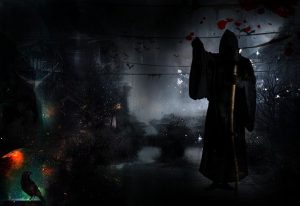 RK asks: “I have been hearing a lot about Luciferianism lately. How is this different from Satanism?”
RK asks: “I have been hearing a lot about Luciferianism lately. How is this different from Satanism?”
Some scholars refer to Luciferianism as a subset of Satanism although it has very particular beliefs about Satan that are much different from those subscribed to by modern Satanists; however, there are important similarities.
For example, much like Satanism, Luciferianism is very eclectic and with no agreed-upon dogma among its adherents which makes it difficult to categorize. Also similar to Satanism, components of Luciferianism can be found in Masonic teachings, Wicca, and New Age philosophies, and its followers are heavily involved in ceremonial magic and the occult. Satanists and Luciferians also segregate themselves into two groups – those who worship Lucifer as a deity, and those who see him as a symbol worth emulating.
Here’s how the two differ. Those Luciferians who worship Lucifer as a deity focus on what they consider to be his “positive” qualities before he fell from grace. They consider him to be their “morning star” (the translation of the name Lucifer) who was created as the most beautiful, the most enlightened, the most powerful of all the angels. However, instead of accepting the rest of the story about his fall from grace and subsequent turning into an evil entity, Luciferians simply ignore this as something invented by religions to control the masses.
As this article explains, this type of Luciferianism worships Satan as the god of this world and venerates him as a being of knowledge and light. “The focus is on the ‘good’ that was in Lucifer prior to his rebellion and not the evil and darkness that is associated with the name ‘Satan.’ Though Lucifer and Satan are one and the same, Luciferianism portrays him as a god of light, a god of knowledge, and a god of magic. Luciferians seek to become gods themselves, a position attained by living a life of goodness, seeking after knowledge, practicing magic, and opening one’s mind to the cosmic mind of Lucifer. In many ways, Luciferianism resembles Gnosticism.”
 The other type of Luciferianism is similar to a form of modern Satanism which does not believe in the existence of Satan and only sees him as a pre-Christian life-principal worth emulating. Anton LaVey’s Church of Satan and The Satanic Temple are examples of this type of Satanism.
The other type of Luciferianism is similar to a form of modern Satanism which does not believe in the existence of Satan and only sees him as a pre-Christian life-principal worth emulating. Anton LaVey’s Church of Satan and The Satanic Temple are examples of this type of Satanism.
For Luciferians, enlightenment is the ultimate goal. “The basic Luciferian principles highlight truth and freedom of will, worshipping the inner self and one’s ultimate potential, and to encourage and celebrate the same within all,” this article explains.
“Traditional dogma is shunned as a basis for morality on the grounds that humans should not need deities or fear of eternal punishment to distinguish right from wrong and to do good. All ideas should be tested before being accepted, and even then one should remain skeptical because knowledge and understanding are fluid. Regardless of whether Lucifer is conceived of as a deity or as a mere archetype, he is a representation of ultimate knowledge and exploration as well as humanity’s savior and a champion for continuing personal growth.”
The article goes on to explain that the history of Luciferianism dates back to the 13th century and a woman named Lucardis who privately lamented the fall of Satan and wanted to see his exalted status in heaven restored. She established a religious sect that was eventually exposed during the Inquisition. In 1234, Pope Gregory IX issued the bull Vox in Rama calling for an end to Luciferianism.
Although the historical record is sketchy on its existence throughout the centuries, it reappeared in 1952 with an English astrologer and witch named Madeline Montalban. Together with a man named Nicholas Heron, an engraver, photographer, and former journalist, they developed a magical system based upon Luciferianism which venerates Lucifer as a deity and benevolent angelic deity. They went on to found the Order of the Morning Star and developed a correspondence course to teach their beliefs to others.
That these beliefs found a willing audience is evidenced by the growth of Luciferianistic beliefs about Satan which showed up in places such as in the personal acknowledgement section of the book, Rules for Radicals, written by the notorious community organizer, Saul Alinsky.
“Lest we forget at least an over-the-shoulder acknowledgment to the very first radical: from all our legends, mythology, and history (and who is to know where mythology leaves off and history begins or which is which), the first radical known to man who rebelled against the establishment and did it so effectively that he at least won his own kingdom – Lucifer.”
 Anton LaVey’s book, The Satanic Bible, also refers to Lucifer in the glowing terms of Luciferianism where he is described as one of the four crown prices of hell who is the “bringer of light, the morning star, intellectualism, and enlightenment.”
Anton LaVey’s book, The Satanic Bible, also refers to Lucifer in the glowing terms of Luciferianism where he is described as one of the four crown prices of hell who is the “bringer of light, the morning star, intellectualism, and enlightenment.”
Existing Luciferian organizations include the Greater Church of Lucifer founded in 2014 in Houston, Texas by Jacob Mckelvy with co-presidents Michael W. Ford and Jeremy Crow who founded the Luciferian Research Society.
Ford is famous for writing the “11 Luciferian Points of Power” which are the core philosophies of Luciferianism and how followers see Lucifer as the inspiration for self-transformation. These include:
- The Adversary represents rebellion with purpose: Wisdom, Strength and Power.
- The Adversary symbolizes the spark of consciousness which questions everything, manifesting the individualistic path with accountability only to the self.
- Lucifer represents the courage and fortitude to acquire healthy self-love, leading to the responsibility of honoring your temple of mind, body and spirit.
- To become your own god you must have the wisdom and strength to govern and guide your life as if your mind is to survive beyond the mortal body.
It’s hard to believe that people are actually willing to consort with evil so blatantly, but it’s true. Years ago, Carlo Climati, who was serving as press director of the Regina Apostolorum Pontifical University in Rome, told the Catholic News Agency that a society dominated by moral relativism is one reason behind this phenomenon because it creates “a society that is turned on its head, in which good becomes evil and evil becomes good,” he said.
Youth are particularly vulnerable to these teachings because they are often “the victims of terrible loneliness, the lack of communication and difficult family situations.” They find the occult to be “an easy and quick fix for their problems” and they mistake it for a game.
“In recent years young people have sort of been brainwashed into not being afraid of the occult world,” he added.
Unfortunately, for too many of these souls, they don’t realize the truth until it’s too late.
Let us pray for God’s mercy on those who are being led down these dark paths, that He may shine His light upon their souls and lead them back to the safety of His embrace.
© All Rights Reserved, Living His Life Abundantly®/Women of Grace® http://www.womenofgrace.com









